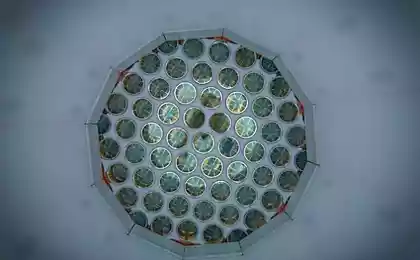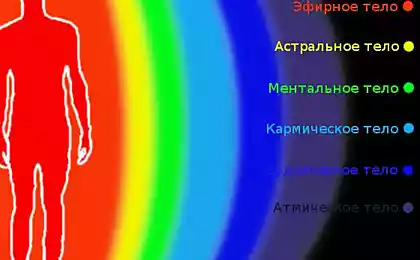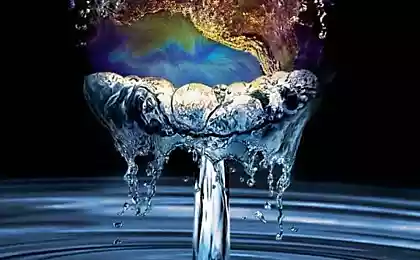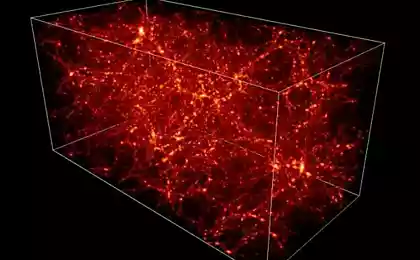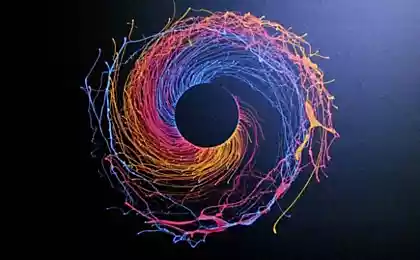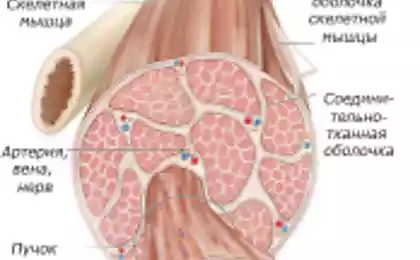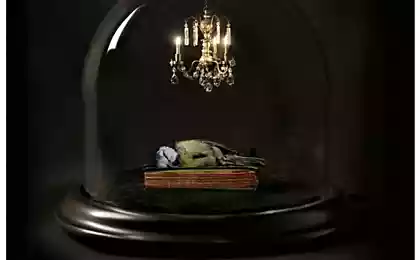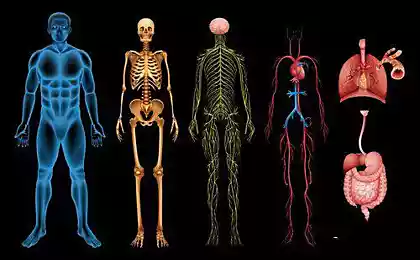572
Jean-Claude Gimbert about the organization of living matter human
Dr. Jean-Claude Gimbert (France) has dedicated 20 years to the study of organization of living matter with the help of your endoscope and filming environment living human tissue. By simple surgical observations, he found under the skin of the complex structure and tried to explain the anatomy, physiology and pathophysiology of sliding subcutaneous structures and their role in lubrication, protection and distribution of water, fat and blood vessels.
This system microvacuolar connective tissue long noticed; and it is the unique structure of the collagen fibrils within the gel of proteoglycans that has been difficult to investigate because they are difficult to see on dried specimens. Dr. Giberto suggested an explanation of these chaotic patterns by observing our environment and the natural patterns in biology.
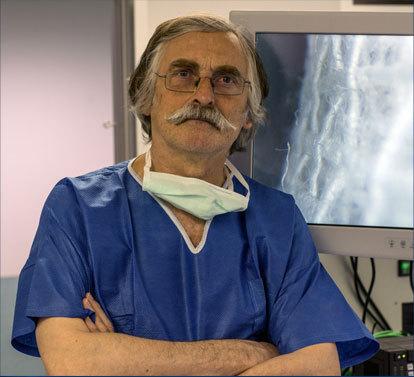
The development of endoscopic surgery has added a new dimension to these observations, which allowed us to obtain a magnified view of living tissue in motion. These concepts were compiled by combining hundreds vnutribruchinnah photos and videos.
These observations led to a big philosophical question about how to organize living matter – this system microvacuolar just connects the organs or it is the connective tissue in which these organs develop?
Gradually emerged the concept of multi-fiber structural organization. The concept originated from observations made on the surface of the skin. Topographic patterns on the epithelium at high resolution consisted of many polygonal shapes, which are deformed and are repelled from each other to transmit the motion.
Beneath the dermis begin larger collagen structures in the form of weaves, which give the tissue its mechanical properties of elasticity, tensile strength and sustainability. Under the skin is many specific anatomical structures, but between them have connective tissue no apparent order. Instead, there is present completely disorganized network of collagen fibers of different shapes in combination with the fractal and chaotic patterns.
The continuity of fibres throughout the body demonstrates how adjacent structures can move independently in different directions with different speeds, while maintaining stability of the surrounding tissues. The mechanism of this is based on fractal patterns within the connective tissue.
The polygonal structure created by liquid air, overlap, and extracellular matrix creates a fabric with unique qualities, which gave the name "collagen absorbent system microvacuolar" or simply "system microvacuolar".
It can stretch or compress, it can be divided and merge with other tissues, and therefore it may be organized to include a number of external mechanical forces. This procedure allows the tissues inside it contain a complex vascular network which may change dynamically during the movement of tissue without shifting efforts.
The hydrophilic nature of the connective tissue determines its gel-like property that gives it infinite potential movements.
The exact biology of this fabric it will be still necessary to fully define and understand, but it can be the key to understanding how to develop our fabrics, why our tissues SAG as we age, and how arthritis affects our movements.
To begin to deploy these concepts, you need to understand the complexity of fractal patterns and nonlinear dynamic systems, which are used to describe objects that seem to be disordered, but the depth of this seemingly random pattern is in order.
In conclusion to these works, Dr. Gilberto developed the concept of global dynamics and continuous matter, which pushed the idea of virtual spaces and the individual layers.
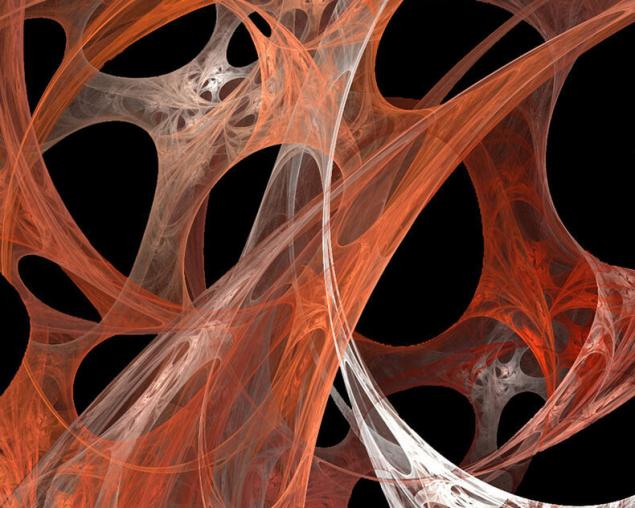
He saw that the connective tissue is not only a fabric for communication among the various bodies — it is actually constitutive (structural) tissue that forms the skeleton and gives the body a structured form.
Thanks to this internal fiber architecture that is built of various specialized cells, maintained and preserved form.
He questioned the paradigm that living tissues are anatomically composed of virtual spaces or separate layers, and replaced it with the notion that our bodies function as one dynamic continuity of tissues.
He has revealed the morphodynamic nature of the fibrils of connective tissue under the influence of internal physical forces of the body; and the subject too long ignored.
He explained that the slip system are the physical manifestation of the movements of fibrils that intersect, overlap among themselves and substitute each other. However, they obviously has its own deep logic.
He opened the window to a strange world of chaos and unpredictable behavior of the fibrils. Fascia can be considered fractalizing architectural network of the stresses of the human body at any level from molecules to the surface of the skin.
The body is a perfect grid, sostojashie of fibers, fibrils, and microfibrils microvacuolar spaces with a structural rationalism that allows us to relate the molecular physico-chemical biodynamics with quantum physics.
Cementing food: starch — slow-acting POISONChronic facial clips — it's IMPORTANT to know! Therefore, living form can be described and understood. A real structural ontology can be understood through the basic functional unit, which is microvacuolar, microscopic volume, which is responsible for the shape and dynamics.
A world that is under the skin, still need to open, but this time it is impossible to explain anything without considering the fractal and chaotic architecture of the tissue, vector most beautiful efficiency... of life itself.published
Source: rehabilitolog.com/news/osnovnye-idei-doktora-gimberto-ob-organizatsii-zhivoj-materii-cheloveka/
This system microvacuolar connective tissue long noticed; and it is the unique structure of the collagen fibrils within the gel of proteoglycans that has been difficult to investigate because they are difficult to see on dried specimens. Dr. Giberto suggested an explanation of these chaotic patterns by observing our environment and the natural patterns in biology.

The development of endoscopic surgery has added a new dimension to these observations, which allowed us to obtain a magnified view of living tissue in motion. These concepts were compiled by combining hundreds vnutribruchinnah photos and videos.
These observations led to a big philosophical question about how to organize living matter – this system microvacuolar just connects the organs or it is the connective tissue in which these organs develop?
Gradually emerged the concept of multi-fiber structural organization. The concept originated from observations made on the surface of the skin. Topographic patterns on the epithelium at high resolution consisted of many polygonal shapes, which are deformed and are repelled from each other to transmit the motion.
Beneath the dermis begin larger collagen structures in the form of weaves, which give the tissue its mechanical properties of elasticity, tensile strength and sustainability. Under the skin is many specific anatomical structures, but between them have connective tissue no apparent order. Instead, there is present completely disorganized network of collagen fibers of different shapes in combination with the fractal and chaotic patterns.
The continuity of fibres throughout the body demonstrates how adjacent structures can move independently in different directions with different speeds, while maintaining stability of the surrounding tissues. The mechanism of this is based on fractal patterns within the connective tissue.
The polygonal structure created by liquid air, overlap, and extracellular matrix creates a fabric with unique qualities, which gave the name "collagen absorbent system microvacuolar" or simply "system microvacuolar".
It can stretch or compress, it can be divided and merge with other tissues, and therefore it may be organized to include a number of external mechanical forces. This procedure allows the tissues inside it contain a complex vascular network which may change dynamically during the movement of tissue without shifting efforts.
The hydrophilic nature of the connective tissue determines its gel-like property that gives it infinite potential movements.
The exact biology of this fabric it will be still necessary to fully define and understand, but it can be the key to understanding how to develop our fabrics, why our tissues SAG as we age, and how arthritis affects our movements.
To begin to deploy these concepts, you need to understand the complexity of fractal patterns and nonlinear dynamic systems, which are used to describe objects that seem to be disordered, but the depth of this seemingly random pattern is in order.
In conclusion to these works, Dr. Gilberto developed the concept of global dynamics and continuous matter, which pushed the idea of virtual spaces and the individual layers.

He saw that the connective tissue is not only a fabric for communication among the various bodies — it is actually constitutive (structural) tissue that forms the skeleton and gives the body a structured form.
Thanks to this internal fiber architecture that is built of various specialized cells, maintained and preserved form.
He questioned the paradigm that living tissues are anatomically composed of virtual spaces or separate layers, and replaced it with the notion that our bodies function as one dynamic continuity of tissues.
He has revealed the morphodynamic nature of the fibrils of connective tissue under the influence of internal physical forces of the body; and the subject too long ignored.
He explained that the slip system are the physical manifestation of the movements of fibrils that intersect, overlap among themselves and substitute each other. However, they obviously has its own deep logic.
He opened the window to a strange world of chaos and unpredictable behavior of the fibrils. Fascia can be considered fractalizing architectural network of the stresses of the human body at any level from molecules to the surface of the skin.
The body is a perfect grid, sostojashie of fibers, fibrils, and microfibrils microvacuolar spaces with a structural rationalism that allows us to relate the molecular physico-chemical biodynamics with quantum physics.
Cementing food: starch — slow-acting POISONChronic facial clips — it's IMPORTANT to know! Therefore, living form can be described and understood. A real structural ontology can be understood through the basic functional unit, which is microvacuolar, microscopic volume, which is responsible for the shape and dynamics.
A world that is under the skin, still need to open, but this time it is impossible to explain anything without considering the fractal and chaotic architecture of the tissue, vector most beautiful efficiency... of life itself.published
Source: rehabilitolog.com/news/osnovnye-idei-doktora-gimberto-ob-organizatsii-zhivoj-materii-cheloveka/
How to ensure backup power supply of a country house is better than a generator
System error or It's not about US

